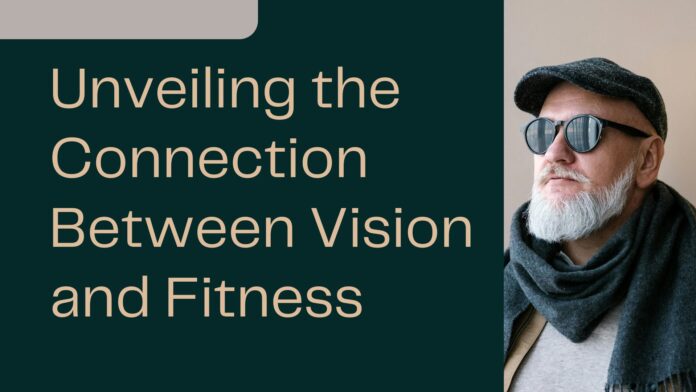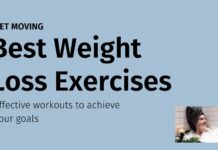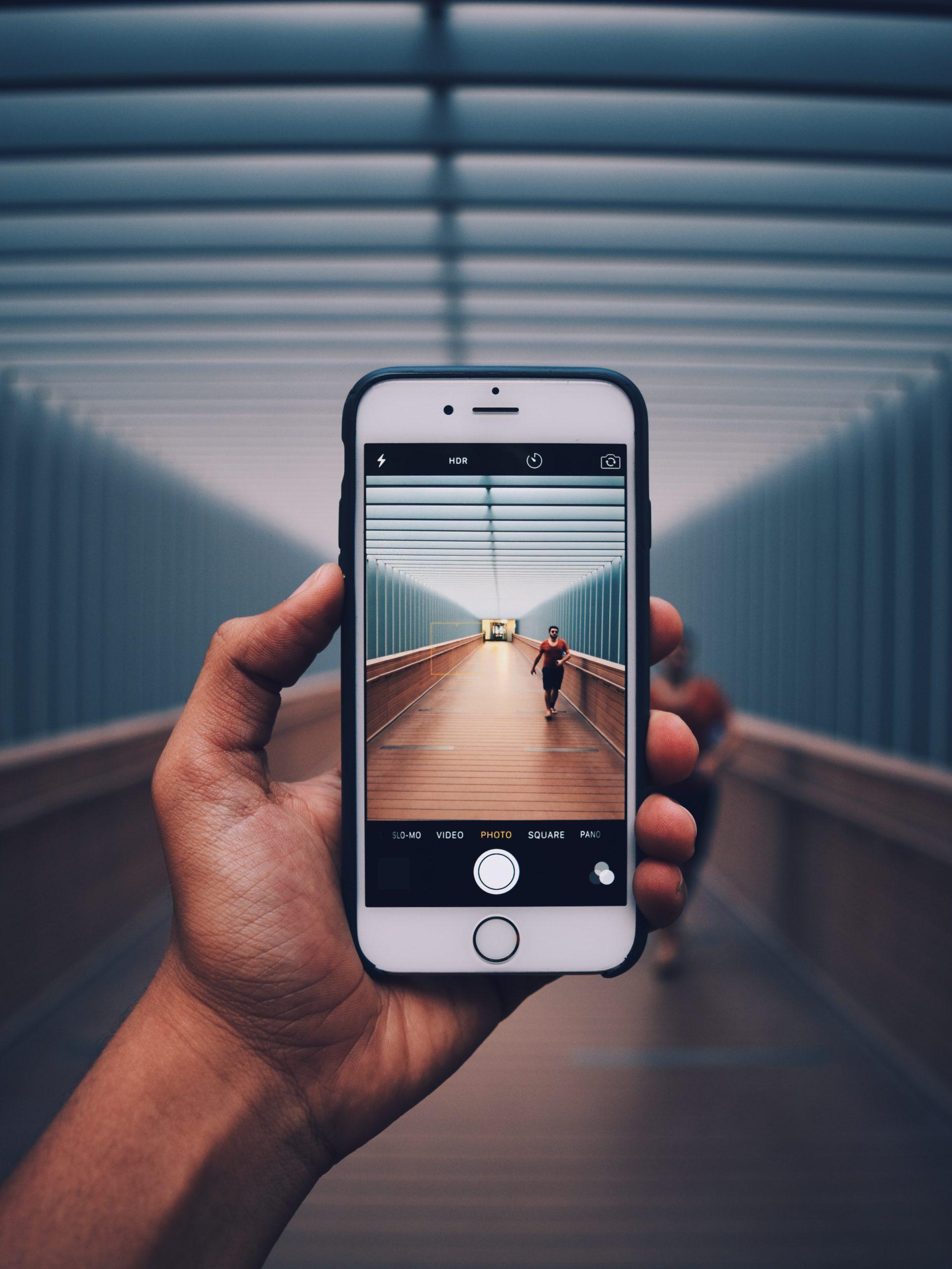See Your Way to a Healthier You: Unveiling the Connection Between Vision and Fitness
Our eyes are windows to the world, but did you know they’re also intricately linked to our overall health and fitness? For far too long, vision and fitness have been viewed as separate entities.
However, emerging research paints a fascinating picture: a two-way street where strong vision can enhance exercise performance, and physical activity can bolster eye health. This article delves into this exciting connection, offering practical tips to optimize both for a truly holistic approach to well-being.
The Visual Advantage in Fitness
1. Enhanced Depth Perception and Spatial Awareness: Strong depth perception allows us to gauge distances and navigate our surroundings with confidence. This is crucial for activities like running, cycling, or playing sports, where judging spatial relationships between ourselves and objects is vital for avoiding collisions and maximizing performance. Regular exercise can also improve spatial awareness, further amplifying this synergy.
2. Sharper Focus and Improved Reaction Times: A well-focused visual system allows for quicker identification of obstacles and cues during exercise. Whether it’s reacting to a change in direction on the basketball court or spotting a potential pothole on a run, sharp focus translates to faster reaction times and improved safety. Exercise, particularly activities involving hand-eye coordination, can further train the brain to process visual information faster.
3. Enhanced Balance and Stability: Our visual system plays a critical role in maintaining balance. The eyes send signals to the brain about our body’s position in space, allowing us to adjust muscle movements for stability. Activities like yoga or tai chi can strengthen these connections, leading to better balance and potentially reducing the risk of falls.
4. Improved Motivation and Engagement: Let’s face it, exercising in low-light conditions or with blurry vision can be demotivating. Conversely, clear vision allows us to appreciate the beauty of nature during an outdoor workout or the intricate patterns of a dance routine. This can significantly enhance our enjoyment of exercise, leading to greater motivation and consistency.
The Fitness Boost for Vision Health
1. Increased Blood Flow and Eye Health: Regular exercise promotes healthy blood flow throughout the body, including the delicate tissues of the eyes. This improved circulation delivers essential nutrients and oxygen to the eyes, which may help reduce the risk of age-related macular degeneration (AMD) and glaucoma.
2. Weight Management and Reduced Risk of Vision Problems: Obesity is a known risk factor for several eye diseases, including diabetic retinopathy. By promoting weight management, exercise can indirectly benefit vision health.
3. Reduced Eye Strain and Digital Eye Fatigue: In our digital age, prolonged screen time can lead to eye strain and digital eye fatigue (DEF). Exercise provides a much-needed break for the eyes, allowing them to relax and refocus. Additionally, activities that involve focusing on distant objects, like hiking or running outdoors, can help counteract the near-focusing demands of digital devices.
4. Stress Reduction and Improved Sleep Quality: Chronic stress can contribute to eye problems like dry eye syndrome. Exercise is a well-known stress reliever, promoting relaxation and better sleep. Adequate sleep is essential for overall health, including eye health.
Pro Tip: Integrate activities that combine visual focus with physical movement, like playing tennis, badminton, or dancing. These activities provide a natural workout for the eyes and body simultaneously.
Remember: Always consult with an eye doctor before starting a new exercise program, especially if you have any pre-existing eye conditions.
Optimizing Your Vision for Fitness Success
1. Schedule Regular Eye Exams: Regular eye check-ups are crucial for maintaining good vision and detecting potential problems early on. An eye doctor can also recommend the appropriate corrective lenses (glasses or contacts) for specific activities, ensuring optimal visual performance during exercise.
2. Choose the Right Eyewear for Your Activity: Not all eyewear is created equal. Look for sports glasses or goggles that are designed to stay put during vigorous activities and offer protection from wind, dust, and UV rays.
3. Prioritize Eye Protection: Protect your eyes from injuries during sports or activities that carry a risk of flying objects. Consider using sports goggles or a protective face shield, especially for high-impact activities.
4. Be Mindful of Screen Time: Take regular breaks from digital screens to give your eyes a rest. The 20-20-20 rule is a helpful reminder: look away from the screen every 20 minutes, focus on an object 20 feet away for 20 seconds.
5. Maintain a Healthy Diet: A diet rich in fruits, vegetables, and omega-3 fatty acids provides essential nutrients that support healthy vision.
Beyond the Basics: Exploring New Frontiers
The connection between vision and fitness is a fascinating are Continuing our exploration of the eye-opening (pun intended) connection between vision and fitness, let’s delve deeper into some exciting new research and practical strategies.
The Science Behind the Synergy
Neurological Connections: Our eyes and vestibular system (inner ear) work in tandem to provide the brain with a complete picture of our spatial orientation. Exercise, particularly activities that challenge balance and coordination, strengthens these neural pathways, leading to improved visual-motor integration. This translates to smoother, more coordinated movements during physical activity.
Brain Plasticity: The brain has an amazing ability to adapt and change throughout life. Studies suggest that certain types of exercise, particularly those that involve visual tracking and spatial awareness, can promote brain plasticity in areas related to vision. This enhanced brain function can further benefit visual processing and reaction times.
The Role of Cognitive Function: Exercise can also improve cognitive function, including aspects like attention, memory, and decision-making. These cognitive benefits can positively impact performance in activities that require strategic thinking and quick visual processing, such as team sports or complex workouts.
Personalized Vision Training: Emerging research explores the potential of vision training programs specifically designed to enhance athletic performance. These programs may involve exercises that target visual tracking, depth perception, and peripheral vision. While the long-term effects require further investigation, initial studies show promise for improved performance in specific sports.
Practical Applications: Tailored Workouts for Optimal Vision
1. Eye Movement Exercises: Simple eye movement exercises can be incorporated into your warm-up routine before exercise. These can include slow, controlled movements in all directions, focusing on near and far objects, and tracking a moving object (real or imaginary).
2. Balance and Coordination Training: Activities like yoga, tai chi, or single-leg exercises challenge your balance system and improve proprioception (body awareness). This can enhance visual-motor integration and promote better coordination during exercise.
3. The “Active Look” Approach: This technique encourages focusing on a series of distant points while walking, running, or cycling. This provides a natural workout for the focusing muscles and helps counteract the near-focusing demands of everyday life.
4. Technology and Vision Enhancement: Virtual reality (VR) technology holds promise for creating immersive training environments specifically designed to target visual skills relevant to various sports activities. While still in its early stages, VR-based vision training could revolutionize athletic conditioning.
5. The Power of Nature: Outdoor workouts offer a unique advantage for eye health. The natural light spectrum outdoors is different from artificial light, and focusing on distant objects like trees or mountains can help relax the focusing muscles and promote overall eye health.
Remember: These are just a few examples. It’s always best to consult with a healthcare professional or certified trainer to develop a personalized vision-boosting workout plan that aligns with your specific needs and fitness goals.
Conclusion: A Holistic Approach to Wellness
By embracing the connection between vision and fitness, we can unlock a new level of well-being. Taking care of our eyes doesn’t just improve our sight, it empowers us to perform better, move with confidence, and experience the joy of physical activity to the fullest. So, the next time you lace up your shoes, remember, you’re not just exercising your body, you’re giving your vision a workout too!
Additional Points to Consider :
- Vision and Mental Health: Research suggests a link between good vision and improved mental well-being. Exercise is well-known for its mood-boosting effects. This creates a positive feedback loop where clear vision can enhance exercise enjoyment, leading to better mental health, which in turn can benefit vision health through stress reduction.
- Accessibility and Inclusion: For individuals with visual impairments, participating in physical activity can sometimes feel challenging. However, there are numerous resources available that promote inclusive fitness programs and adaptive equipment. Promoting accessible exercise for all is crucial for overall health and well-being.
- The Future of Vision and Fitness: The field of vision and fitness research is constantly evolving. With advancements in technology, personalized training programs, and a deeper understanding of the neurological connections, we can expect even more exciting developments in the future.






